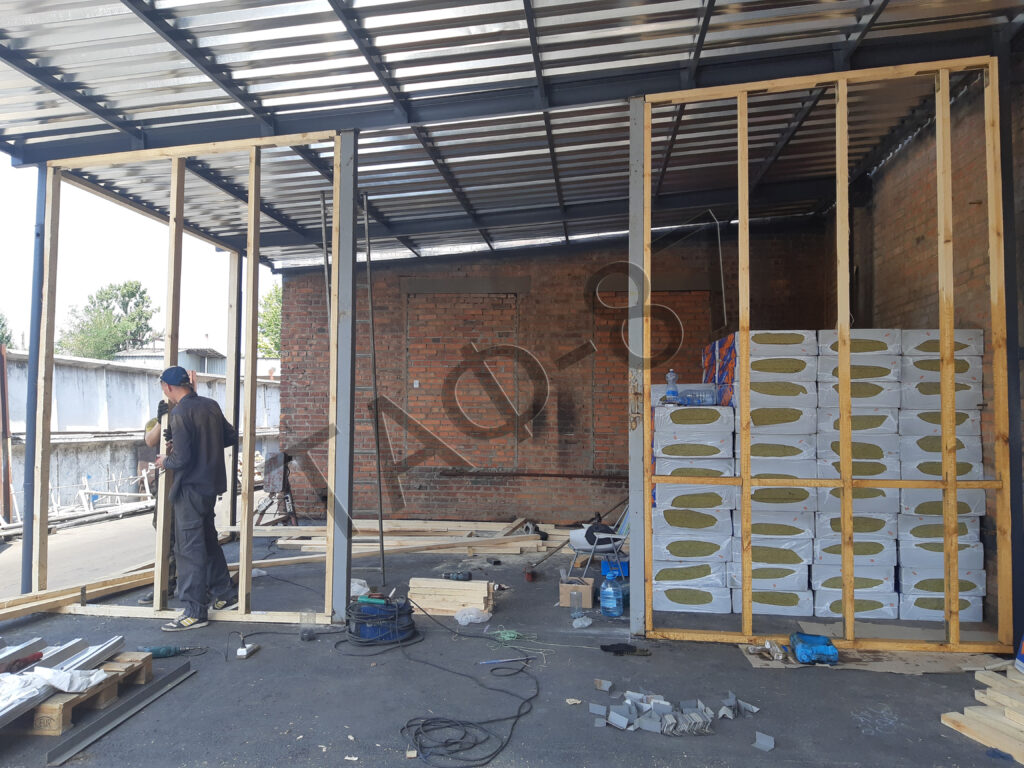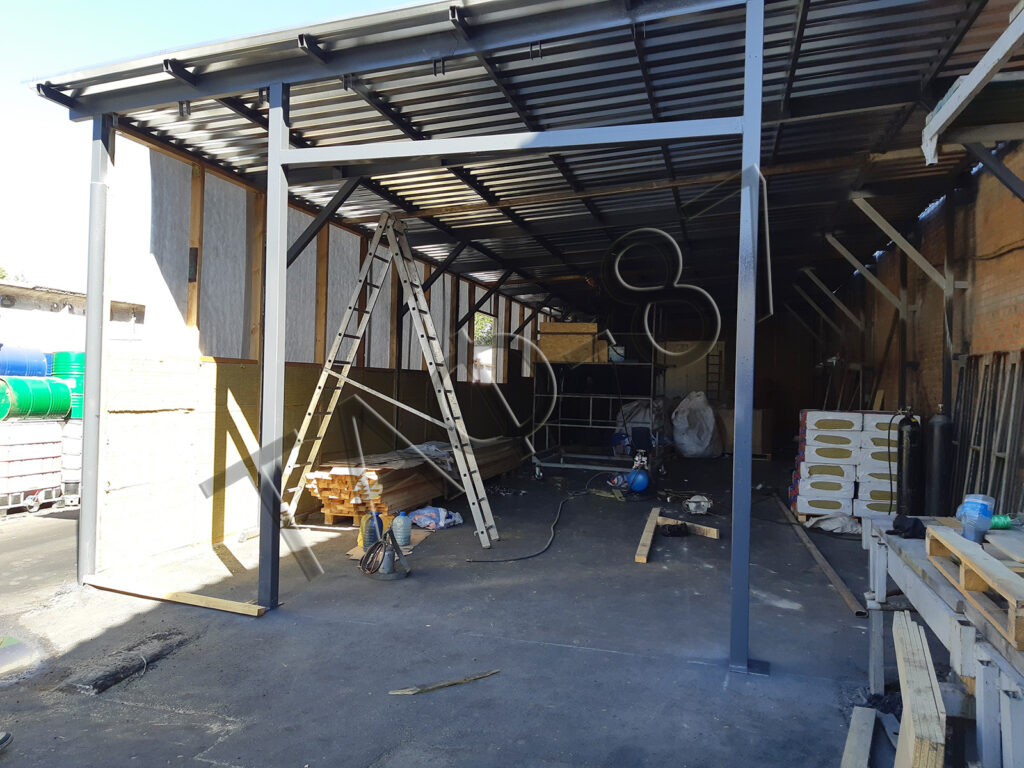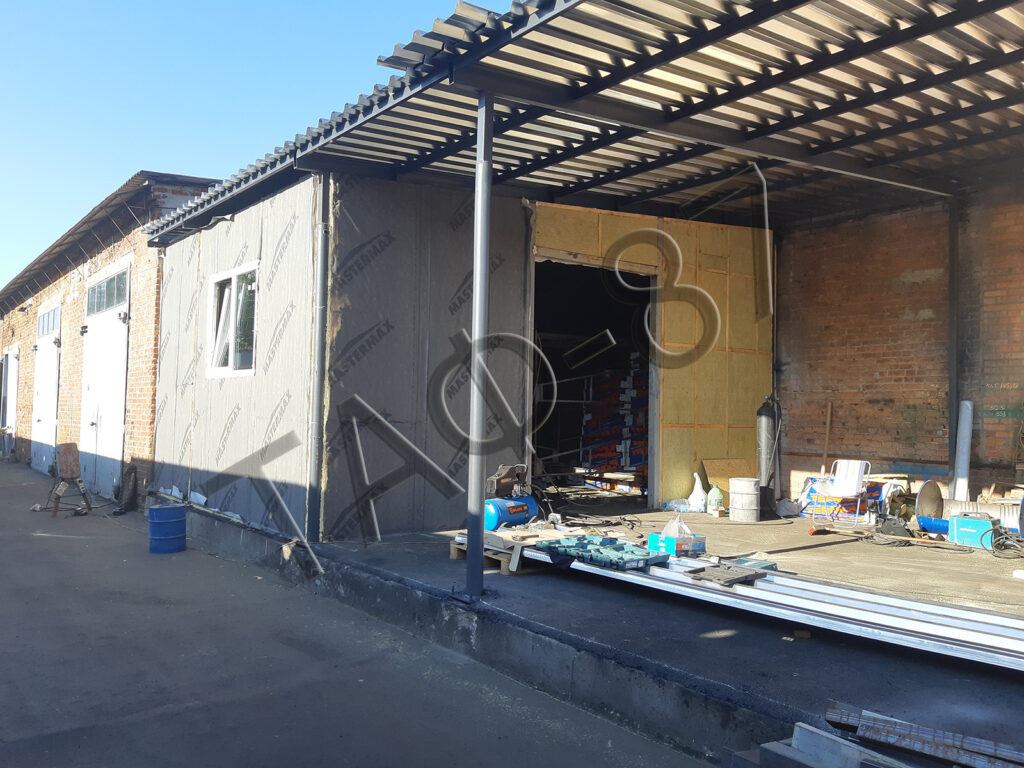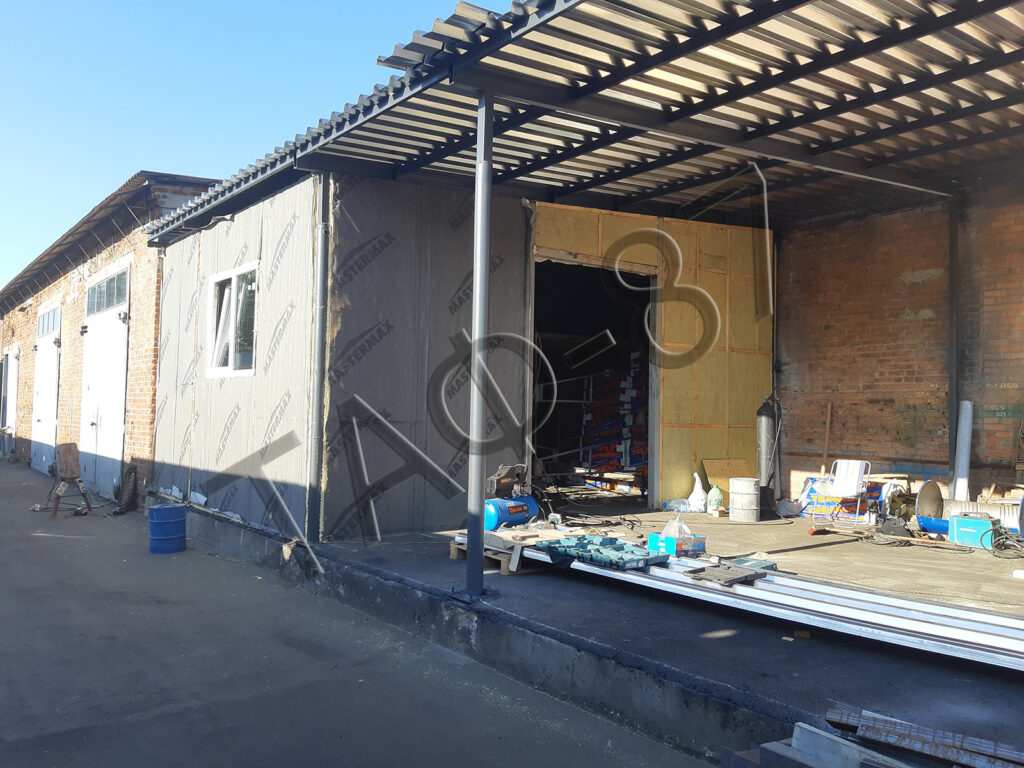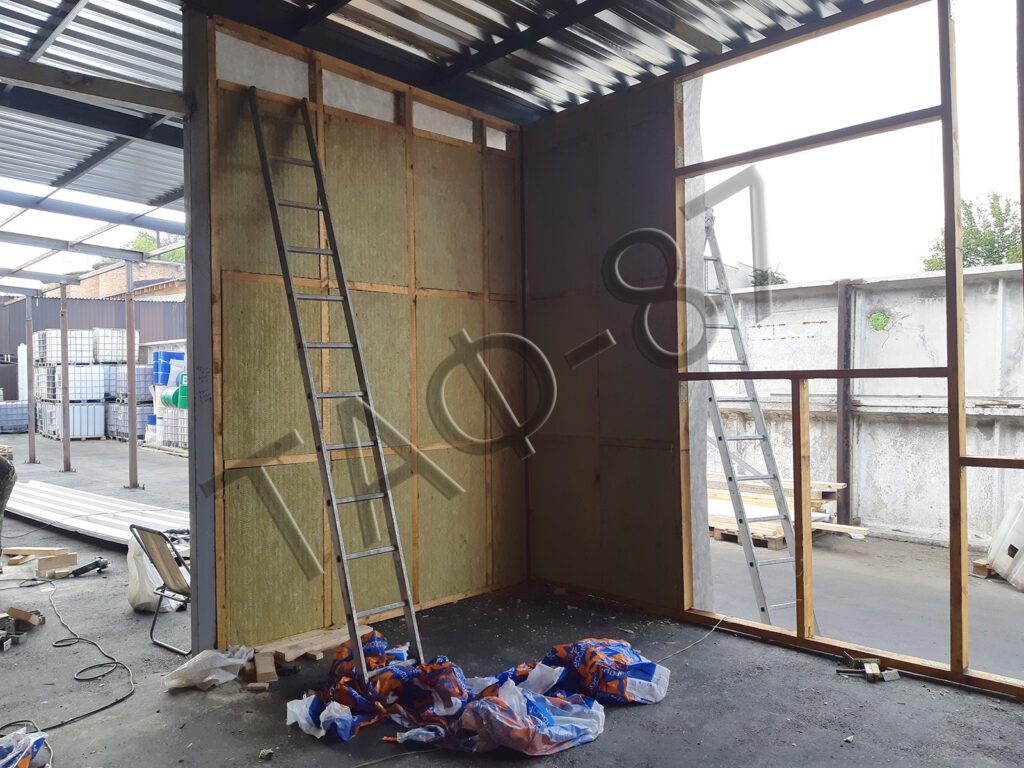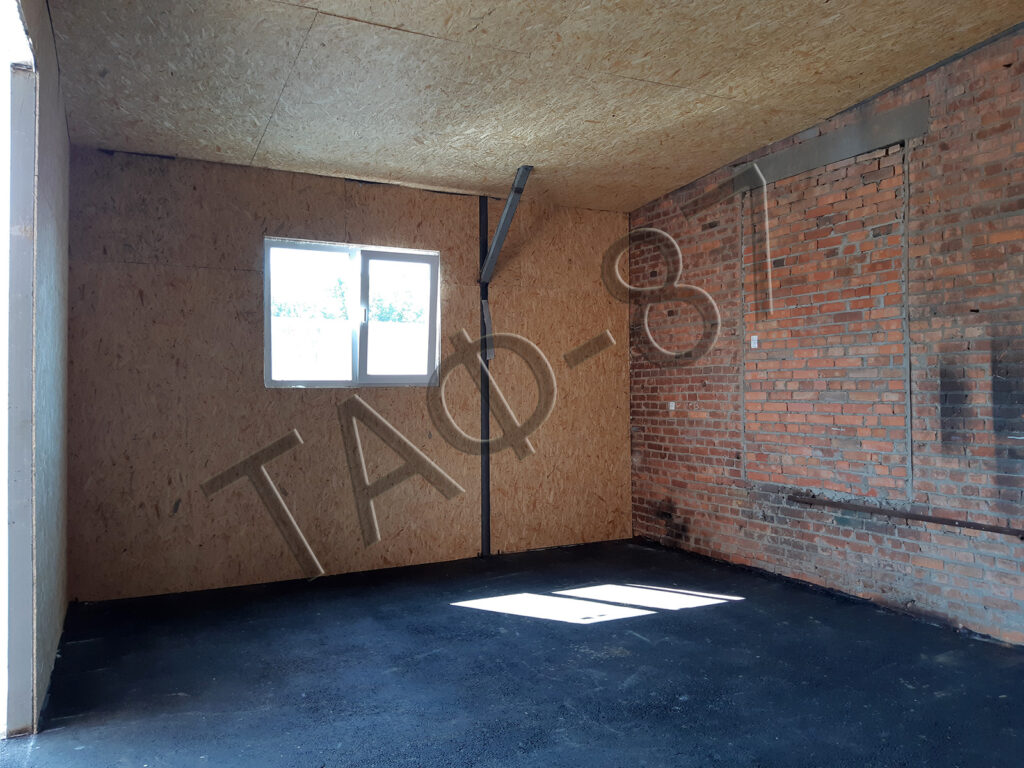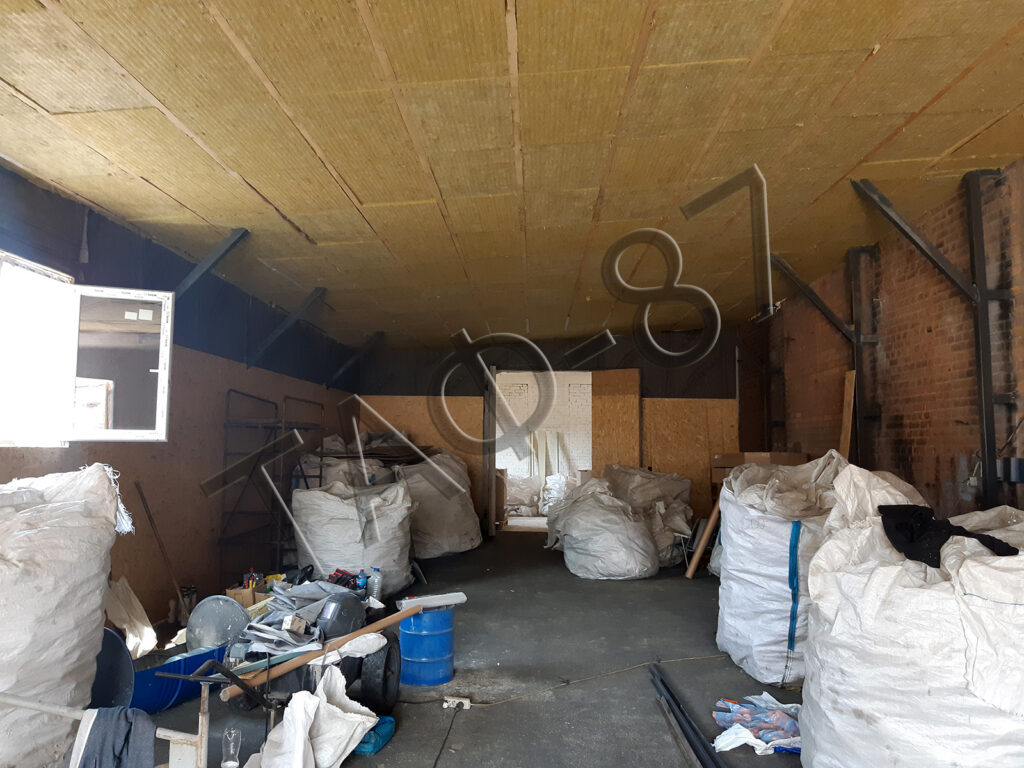Address
Kharkiv, str. Dobrovoltsiv (Molodoy Gvardii), 15/17, 4th floor, room 408
Since metal has a very high thermal conductivity, in order to achieve the required temperature inside, the hangars must be insulated.
What requirements should the insulation for the hangar meet?
How to insulate a hangar, if its design features – material and shape dictate some requirements that the thermal insulation material must meet:
Insulation of hangars with polyurethane foam (PUF) meets all these requirements.
Foam is applied to the surface using a special device that combines the components of the future insulation. The finished mixture is fed to the atomizer under high pressure. As soon as polyurethane hits the surface, it enters into a chemical reaction with atmospheric air and begins to foam. Due to the capture of air molecules, its volume increases 80-100 times.
This method of application allows you to insulate a hangar of any configuration by filling even minor joints.
PUF is a material with a high degree of adhesion. The foam sticks and is fixed on the surface of any, even smooth, material.
It does not require any additional efforts to pre-prepare the surface before application – it is enough to clean it mechanically from dust.
Relics of the past
The price of insulating a hangar or warehouse with spraying polyurethane foam will depend primarily on the area of the building and the complexity of its configuration. But given the large volumes, it cannot be low. Therefore, some contracting organizations, caring more about their own benefit than the benefit of the client, offer to insulate the hangar using mineral wool, foam or hot bitumen in order to save money. But this is a dubious benefit – these materials have already lost their relevance, since their use is less effective compared to spraying PPU and has a number of limitations.
Mineral wool is a very hygroscopic material, i.e. absorbs moisture strongly and can hold it for a long time, while wet wool loses up to 90% of its thermal insulation properties.
